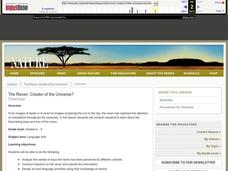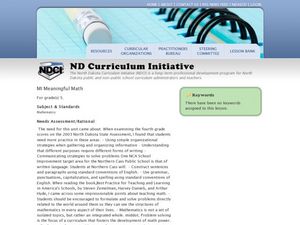Curated OER
Using Homographs
Not all homographs are the same! Actually, that's exactly what the definition means; the spelling is the same, but the meanings are different! Look at some common homographs with your class. Example words include: bow, desert, produce,...
Savvas Learning
Comparatives and Superlatives
If not the best, then certainly one of the better grammar resources designed for language learners, this packet focuses on comparatives and superlatives.
Curated OER
The Raven: Creator of the Universe?
Students explore biology by researching birds in class. In this raven identification lesson, students utilize the Internet to identify the anatomy, habits and habitat of ravens. Students write descriptive paragraphs about ravens and read...
Curated OER
Creating a Digital Newspaper
Pupils create a digital newspaper. In this digital newspaper instructional activity, students review the sections of a newspaper and brainstorm ideas for their paper. Pupils complete a schools news report, student interview, opinion...
Curated OER
Swimming with Crabs
Learners explore Earth science by completing several graphic organizer activities in class. In this oceanography lesson, students research ocean inhabitants such as blue crab and oysters. Learners complete graphic organizers about the...
Curated OER
MI Meaningful Math
Fifth graders increase skills in organizing information for writing. In this organization lesson, 5th graders use correct grammar to design math problems for real world math.
Curated OER
Reflexive Pronouns
In this reflexive pronouns worksheet, students type in the correct pronoun, with the option of a hint and checking the answer.
Curated OER
Presenting..... Prefixes! Hold Down the Applause, Please!
Fifth graders read and consider a list of common prefixes and their meanings. They complete a worksheet which asks them to read and define a prefix in context. They switch and evaluate each other's papers.









